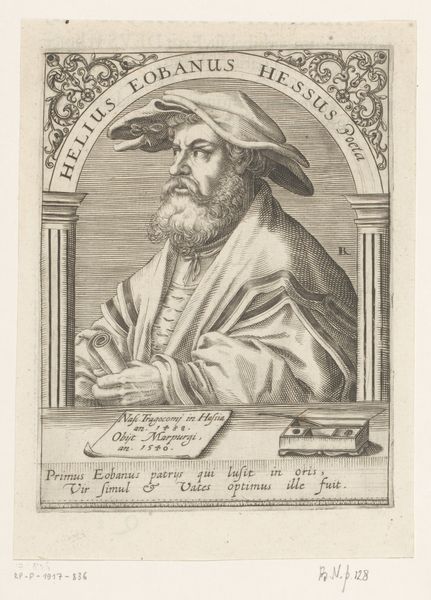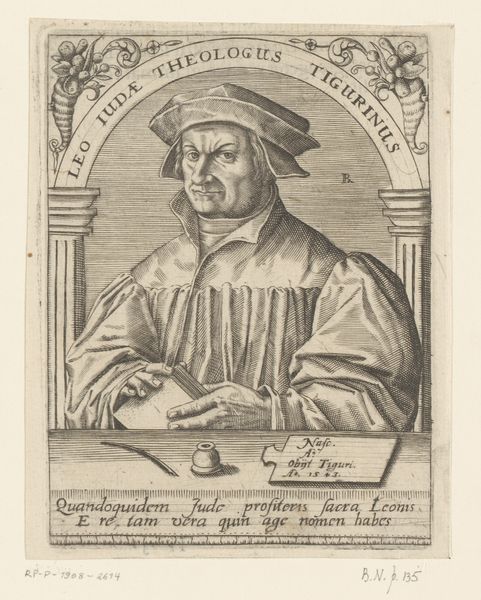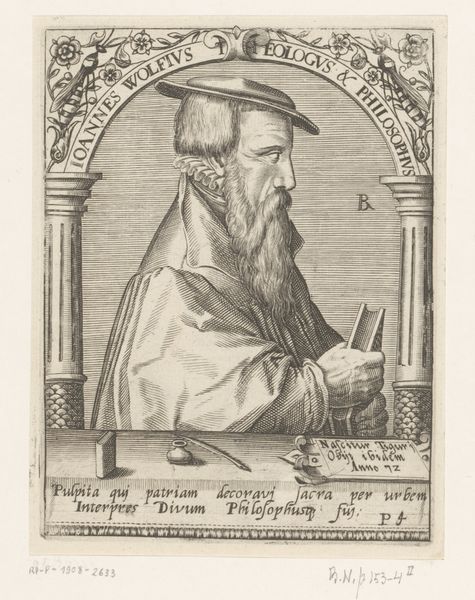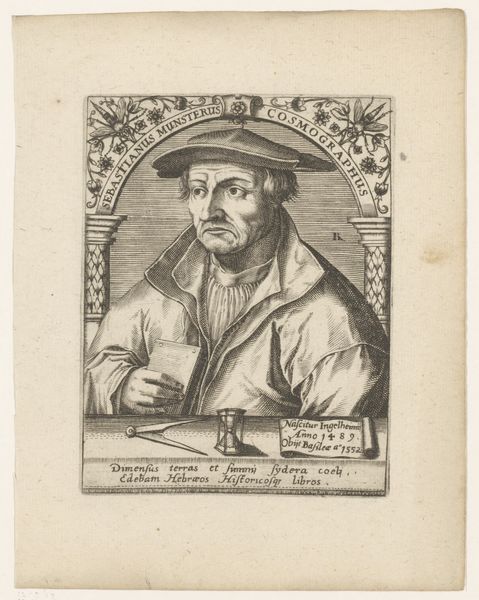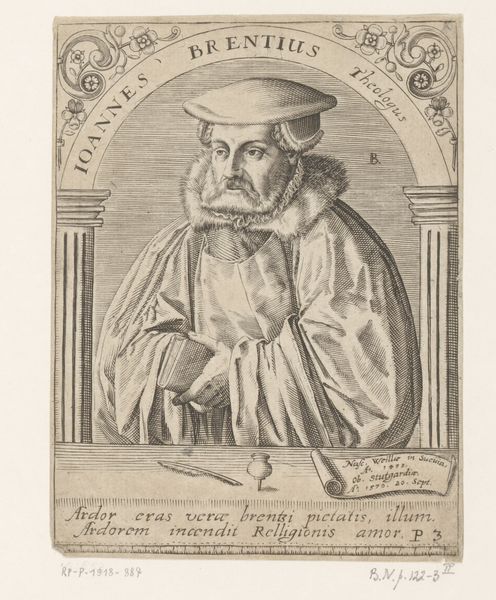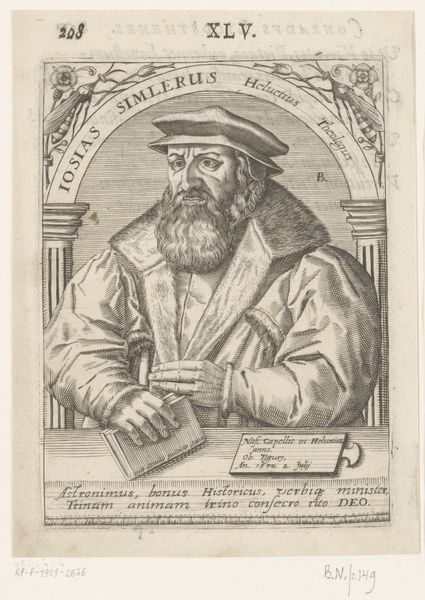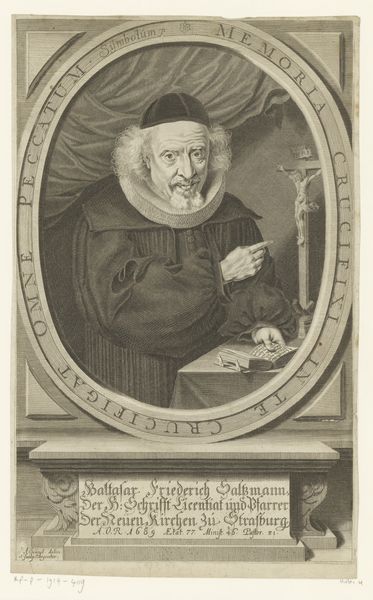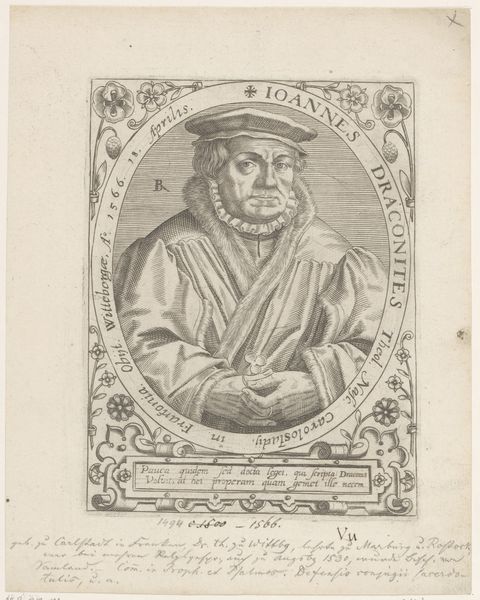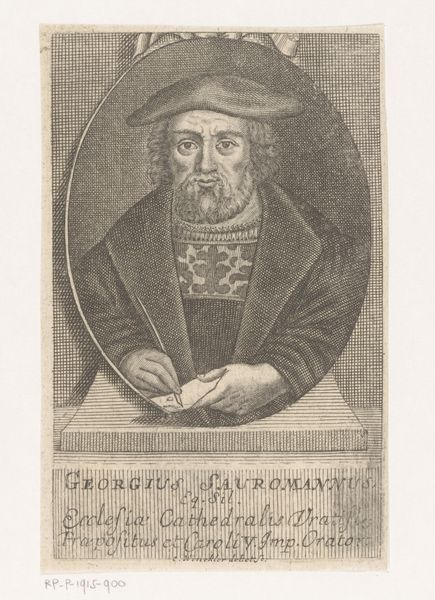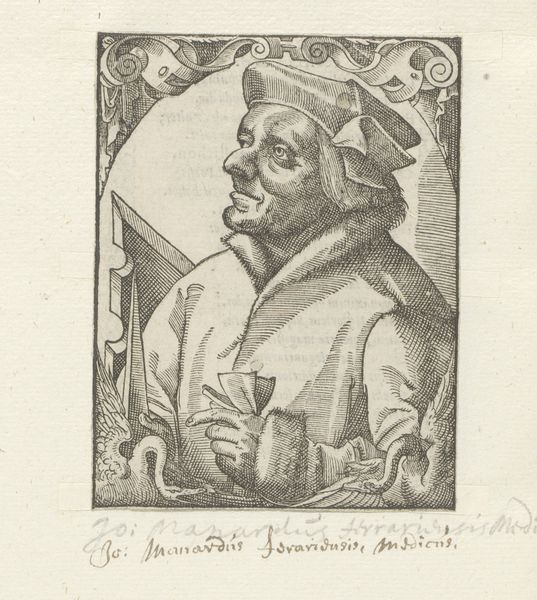
engraving
#
portrait
#
book
#
old engraving style
#
caricature
#
11_renaissance
#
line
#
portrait drawing
#
northern-renaissance
#
engraving
Dimensions: height 142 mm, width 106 mm
Copyright: Rijks Museum: Open Domain
Curator: Here, we're looking at a striking engraving entitled "Portret van Rudolf Gwalther," dating back to somewhere between 1597 and 1599. It's currently held in the Rijksmuseum. Robert Boissard created this portrait using a fine, linear style. Editor: It immediately gives me a sense of stern intellectualism. The details, down to the furrowed brow and the quill poised over the book, suggest a man deeply absorbed in his work and his era’s sociopolitical concerns. Curator: Gwalther was indeed a significant figure, a Swiss Reformed clergyman and theologian. Boissard situates him amidst the humanist intellectual currents of the late 16th century, reflecting a very specific social context. The printing press amplified these reformation theologies, thus engraving played a role in dissemination. Editor: Precisely. I see a portrait that pushes past simply documenting likeness. The presence of the book isn’t a prop, but a signal. It embodies Gwalther's life-work, it becomes his story of faith, reformation, and, power in literacy within his cultural position. It also makes me think about literacy overall. It seems gendered to me; who in this era had such privilege, and why is Gwalther one of those people? Curator: Boissard includes other symbols, adding further depth. The architectural elements framing Gwalther add a touch of classicism while simultaneously signaling Gwalther's position within institutional frameworks of both religion and knowledge. Editor: Those flourishes also lend a kind of gravitas, yes, but to what purpose? It reads as propaganda in its idealization of a figure—almost a veneration of white male authority through that ornate frame. The shadows in the portrait remind us how we look up to figures such as this, a subtle commentary on the power dynamics inherent in portraiture itself, then and now. Curator: Perhaps Boissard aims to both immortalize and scrutinize a man who greatly shaped theological discourse. It makes me consider, what aspects of the establishment was Gwalther trying to conserve versus what new approaches to old ideas did he hope to inspire? Editor: This definitely gives one a lot to reflect upon considering the enduring echoes of social power on society even today.
Comments
No comments
Be the first to comment and join the conversation on the ultimate creative platform.
